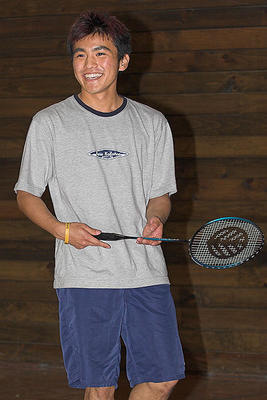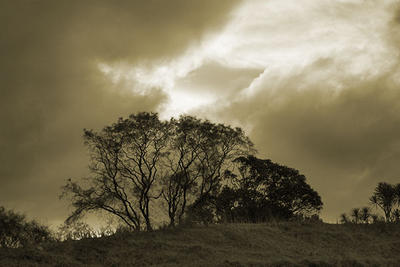 More like fun. Actually, a lot like fun. However, the other side of the coin—so to speak—is that some of the unpaid things I’ve been doing have been more like work.
More like fun. Actually, a lot like fun. However, the other side of the coin—so to speak—is that some of the unpaid things I’ve been doing have been more like work. I suppose you want examples. Well, processing the photos for last Thursday’s presentation to the PNTMC turned out to be a mission; fortunately, one I accomplished with just enough time to spare. Conversely, photographing the badminton tournament for OutsideIn last Sunday meant I got to meet up with friends from all over the world and make new friendships—Aberry informed me that there were people from at least 12 countries playing in the tournament. I’d intended spending just an hour or so there, but—of course—I stayed to the end. I’m glad I did, too, as I got to see badminton played at a level I wouldn’t have thought possible. Several of us were gathered in a group, watching the mixed doubles final; some of the rallies were so outrageous we just laughed and shook our heads in disbelief.
Now the OutsideIn exhibition is up and running. If you’re in Palmerston North, you can view it at Te Manawa until the end of the month; it then shifts to the Plaza for three days.  Most of the photos are from events I photographed; they’re complemented with art works and writings by some of the students. After the opening on Thursday evening, I said goodbye to friends, most of whom I hadn’t even met a few months ago, and walked out into the night rain. I felt slightly strange, as if I’d left something behind. Perhaps I have—but I’ve gained far more.
Most of the photos are from events I photographed; they’re complemented with art works and writings by some of the students. After the opening on Thursday evening, I said goodbye to friends, most of whom I hadn’t even met a few months ago, and walked out into the night rain. I felt slightly strange, as if I’d left something behind. Perhaps I have—but I’ve gained far more.
So now it’s Labour weekend, and I’m editing and trying to take advantage of the weather. Walking this morning, down through the cutting as cold shadows pulled back into the banks and the sun began to warm the road; Te Awaoteatua Stream rushing under bright green poplar leaves, a piwakawaka1 cheeping and ranting from time to time... it was the kind of brilliant-day silence that’s accentuated, not compromised, by sounds—the calling of birds, the whingeing of a lamb separated from its mum, the passing of an occasional car—all those sounds simply draw attention to the silences between. The family of spur-winged plovers2 in the paddock past the bridge seemed less perturbed than usual, not bothering to screech at me but instead just moving a little further away. Everything seemed alive with birds; an impression I’d noticed the previous evening as I drove to meet friends for dinner. That evening, flights of swallows3 and flocks of finches filled the air; I drove past roadside magpies4 and innumerable blackbirds and thrushes. Near Ballance, I saw three swans flying, heads suspended on outstretched, flexing necks. There was something strange about them, the way they flew like omens, like pointers to some other-world destination, in formation across a grey, fading sky... Later, in the half-light, a lone, fast-flying duck. When I eventually returned home,  the last thing I heard, at 8 minutes to midnight, was a ruru5 calling, loud, close, persistent. Then dreams.
the last thing I heard, at 8 minutes to midnight, was a ruru5 calling, loud, close, persistent. Then dreams.
Up No. 3 Line I studied a goldfinch6 through the binoculars, paying attention to its its striking colours: the blood-red face, the white, black, fawn and yellow. A few minutes later, I watched two tauhou7 (silvereyes) investigating a scrappy coprosma. Superficially and from a distance they can appear uninteresting: small, common, green and russet birds notable only for the white ring around the eye. But, through binoculars, the texture of the birds and the subtlety of their colours became apparent—the soft, fluffed-up feathers on their bellies; the clean, neat lines of wing and tail feathers; the narrow beak tapering to a needle-sharp point. As they flitted among the shrubbery, they’d sometimes shiver: small bundles of puffed-out, trembling intensity. It’s hard to think of birds—especially those as apparently insubstantial and fragile as tauhou or piwakawaka—as the heirs of dinosaurs, but that seems to be what they are. I thought about avian influenza and how it might lead to a human ‘flu pandemic, if not this time, then eventually; and I remembered the previous evening’s swans, and that solitary duck speeding into the dusk. We think dinosaurs died out millions of years ago, but maybe, even after all those aeons, they can still affect more than just our imagination.
1Rhipidura fuliginosa placabilis; North Island fantail
2Vanellus miles novaehollandiae
3Hirundo tahitica; welcome swallow
4Gymnorhina tibicen; Australian magpie
5Ninox novaeseelandiae; morepork
6Carduelis carduelis
7Zosterops lateralis lateralis
Photo 1: self evident.
Photo 2: Many Happy Returns, Kohei!
Photo 3: Kowhai and rain cloud, Pohangina Valley. I took this on a walk several weeks ago. I made it home just ahead of the rain.
Photos and words copyright 2005 Pete McGregor
No comments:
Post a Comment